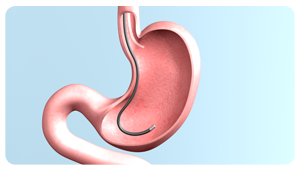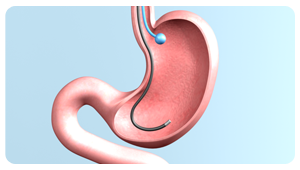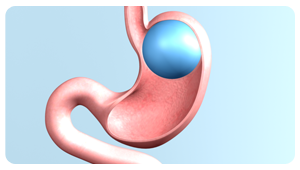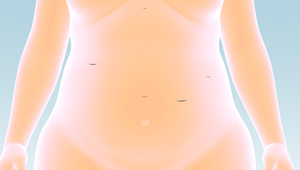Intra-gastric Balloon




wound site
For patients who are overweight but are still indecisive about undergoing surgery, endoscopic intra-gastric balloon is an option. A saline-filled balloon will be placed inside the top of the stomach, reducing stomach volume and giving a sensation of satiety. This is only a TEMPORARY treatment, as the balloon cannot be placed in the stomach for more than 6 months. Patients should maintain a balanced diet and exercise regularly for effective weight loss.
Procedures of Intra-gastric Balloon
Placement of gastric balloon is relatively simple compared to other surgeries. Patients will be sedated and a balloon will be placed inside the stomach with the help of an endoscope. Saline with blue dye will then be injected into the balloon via a catheter. The volume to be injected depends on the patient’s condition, which is about 400-600ml in general.
The procedure takes around 30 minutes and hospitalization is not usually required. Fluid diet is usually advised for the first week after procedure. Also during the first week after balloon placement, patients may experience stomach discomfort or pain, vomiting and abdominal distention.

Benefits of intra-gastric balloon
- Low risk: Intra-gastric balloon is a non-invasive and low risk procedure. Patients can experience quick recovery, and no general anesthesia is required.
- Improved eating habits: Patients will easily experience fullness during food intake and thereby reducing volume. The speed of food intake is also important and needs to be adjusted. Dietitian will be instructing you on various eating habit changes.
- Reversible: Placement of the balloon is only a temporary measure. Patients need to continue with their eating habit changes to maintain their weight loss.
- Widely applicable: Patients with lower BMI may also consider to undergo this low risk procedure.
Risks of intra-gastric balloon
- The balloon may break and cause leakage and bowel obstruction.
- Intra-gastric balloon may cause gastric ulcer, although this is rare.
- Some patients may experience severe discomfort and vomiting.
The information on this website is for general educational purpose only.
Readers should consult their physician before considering treatment, and should not interpret their condition solely based on the information above.


